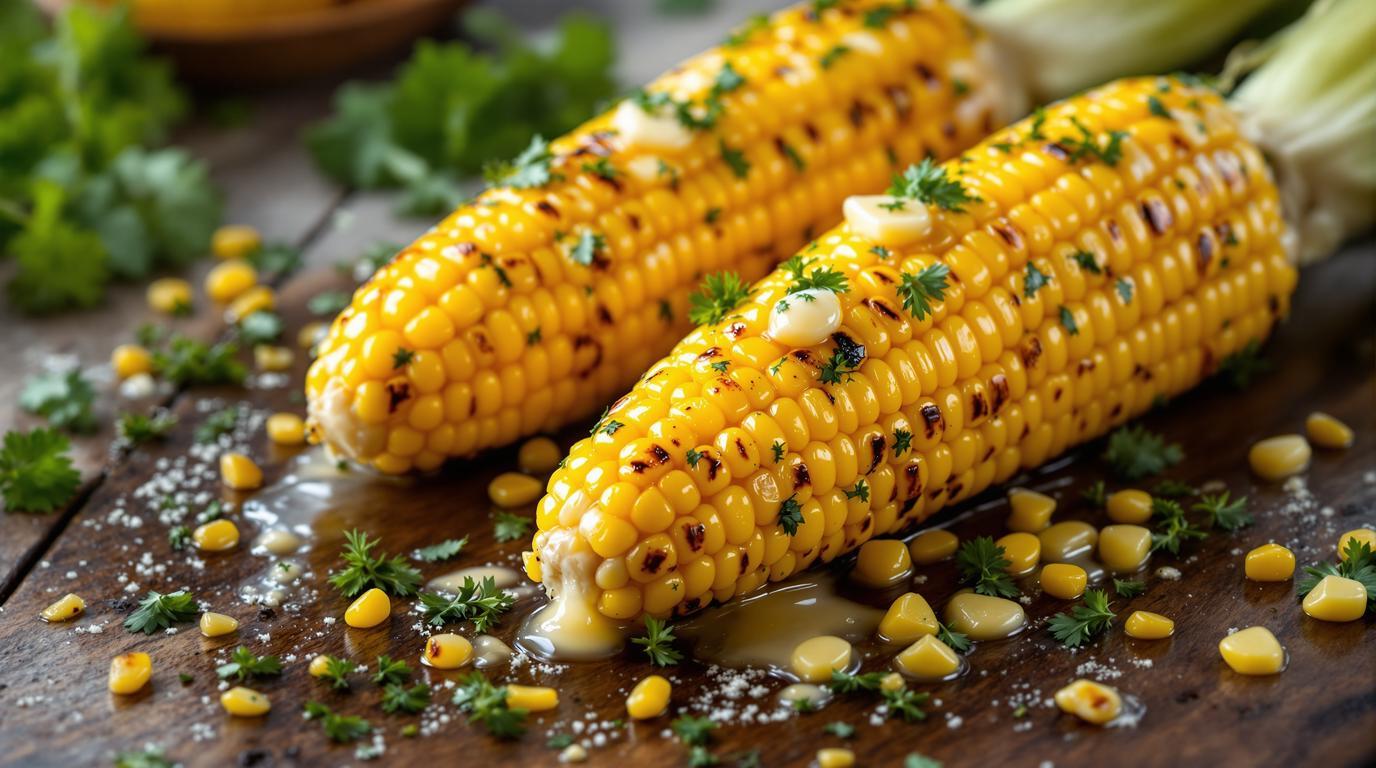There’s something almost magical about perfectly prepared corn on the cob that transports me back to my grandmother’s farmhouse kitchen. The sweet aroma of corn steaming in its husks, that first satisfying bite where butter drips down your chin—these are the sensory memories that define summer cooking. During my early days at the Culinary Institute, I was surprised to discover that my classmates from different regions all had their own “correct” way to prepare corn. Yet the method I’m sharing today—combining Midwestern soaking techniques with Southern butter traditions—consistently makes neighbors peek over fences when the aroma wafts through the neighborhood.
The Secret to Perfect Corn on the Cob
The distinction between good corn and exceptional corn lies not in complicated techniques but in understanding the fundamentals. After two decades in professional kitchens, I’ve learned that proper corn preparation begins before cooking. Soaking your corn is a technique I learned from a Midwestern sous chef whose family had grown sweet corn for generations. “The kernels drink up that moisture,” he’d say, “making each bite juicier.”
While many modern recipes skip this crucial step, I find that old-fashioned techniques like ice water soaks truly make a difference. Just as my grandmother used cold water for pie crusts, corn benefits from this traditional approach.
The Herb Butter Foundation
The heart of this recipe is the herb butter—a balance of fresh herbs, quality butter, and perfectly measured seasonings. Here’s what you’ll need:
- 6 ears of sweet corn, husks and silk removed
- ½ cup (1 stick/113g) unsalted butter, softened but not melted
- 3 tablespoons fresh parsley, finely chopped
- 2 teaspoons fresh thyme leaves
- 2 cloves garlic, minced (optional)
- 1½ teaspoons kosher salt
- ½ teaspoon freshly ground black pepper
For the butter, temperature matters tremendously. Too cold and it won’t incorporate the herbs; too warm and you’ll lose the essential structure. Think of it like making mayonnaise—the emulsion needs the right conditions to succeed.
The Grandmother Method
Follow these steps for corn that will make your whole street jealous:
- Submerge husked corn ears in cold water for 30-60 minutes.
- While corn soaks, prepare herb butter by mashing softened butter with herbs, garlic (if using), salt, and pepper until well combined.
- Preheat oven to 375°F (190°C).
- Remove corn from water, pat dry with paper towels.
- Generously coat each ear with herb butter (reserve about 3 tablespoons for later).
- Wrap each ear individually in aluminum foil, twisting ends to seal completely.
- Place on baking sheet and bake for 20-25 minutes, turning once halfway through.
- For a charred finish, unwrap corn, brush with remaining herb butter, and broil for 2 minutes, watching carefully.
Chef’s Note: The foil package creates a perfect steaming environment, infusing the corn with flavor while retaining moisture. My grandmother taught me that you don’t need fancy equipment—just understanding how heat and moisture work together.
Perfecting Your Technique
Over years of teaching home cooks, I’ve noticed a few common missteps with corn preparation:
- Don’t skip the soaking step—it’s what gives corn that perfectly plump kernel texture.
- If butter over-softens, freeze it for 5 minutes before mixing with herbs.
- Remove corn silk with a damp paper towel—it clings to the silk but not the kernels.
- For a lighter version, use half butter, half olive oil with a touch of lemon zest.
If you enjoy baking, you’ll recognize that this attention to detail mirrors what makes depression-era banana bread and classic French chocolate cake so special—precise technique elevating simple ingredients.
Perfect Pairings
This corn complements virtually any summer meal, but I particularly love it alongside grilled ribs or chicken. For beverages, the sweetness of corn paired with herb butter finds harmony in a dry Riesling or crisp pale ale. Just as salt transforms coffee, contrasting flavors enhance corn’s natural sweetness.
I’ve served this corn at everything from backyard barbecues to catered events for celebrities, and it consistently earns the highest praise: silent enjoyment followed by requests for seconds. The beauty lies in its simplicity—quality ingredients prepared with care and understanding. This isn’t just cooking; it’s honoring a tradition that spans generations of summer gatherings. Try it once, and I guarantee it will become part of your own family’s culinary heritage.
